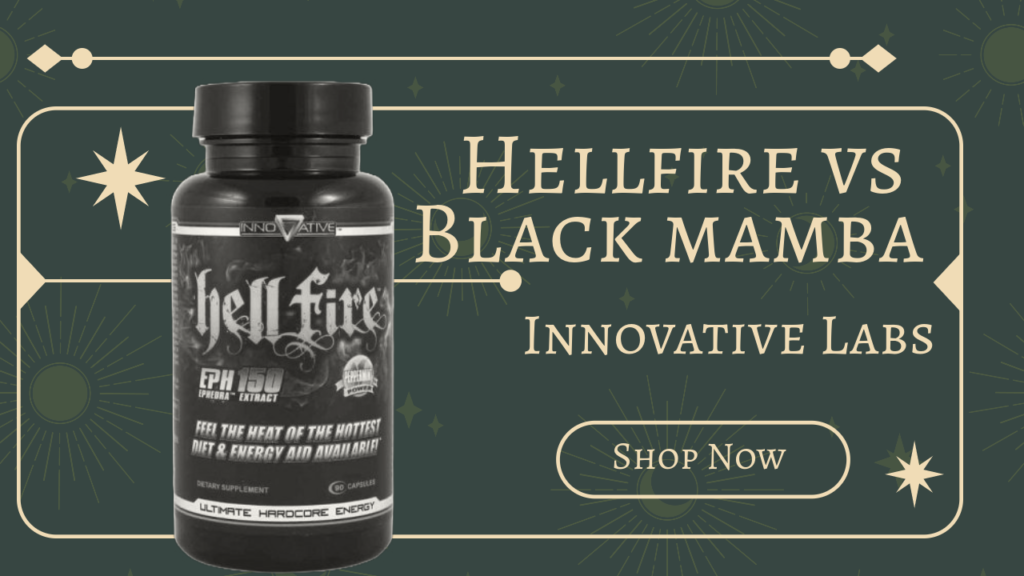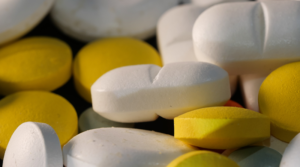Are you searching for the perfect fat burner to help you achieve your weight loss goals? Look no further than the fantastic trio of fat burners from Innovative Labs: Black Mamba, Hellfire, and Diabolos ECA. These products have gained recognition for their potent stimulant and thermogenic properties, making them effective tools for burning fat. In this comprehensive comparison, we will delve into the key differences between these popular fat burners, explore their main ingredients and blends, and discuss what to expect and potential side effects. Let’s dive in and find out which fat burner is the right fit for you!

What Are Black Mamba, Hellfire, and Diabolos?
Black Mamba, Hellfire, and Diabolos are all fat burners created by Innovative Labs. These products have become widely known in the fitness and weight loss community for their ability to enhance thermogenesis and stimulate fat burning processes. As a result, they have gained a loyal following among individuals seeking effective weight loss solutions. Each fat burner contains a unique blend of ingredients designed to support weight loss and provide an energy boost during workouts. Let’s take a closer look at the main differences between these three fat burners.
Differences in Ingredients and Blends
When comparing the labels of Black Mamba, Hellfire, and Diabolos, we can observe some key variations in their ingredients and blends. These differences play a crucial role in determining the specific effects and potency of each fat burner.
Caffeine and Ephedra Content
One notable distinction between these fat burners is their caffeine and ephedra content. Diabolos ECA Fire Caps contain 75mg more caffeine than Hellfire, with a total caffeine content of 225mg compared to Hellfire’s 150mg. Additionally, Hellfire contains 100mg more ephedra than Diabolos, making it the fat burner with the highest ephedra content. On the other hand, Diabolos contains only 50mg of ephedra, which falls within the average dosage range for effective weight loss.
Active Ingredient Blends
Another aspect to consider is the composition of the active ingredient blends in each fat burner. While these blends are proprietary, meaning the exact milligram amounts of each ingredient are undisclosed, we can still analyze the shared ingredients and their potential effects.
Within the blends of Black Mamba, Hellfire, and Diabolos, we can identify four common ingredients: Senegalia Berlandieri Extract, 2-Aminoisoheptane HCl (DMHA), Black Tea Extract, and Black Pepper Extract. These ingredients contribute to the stimulant and thermogenic properties of the fat burners. Senegalia Berlandieri Extract and DMHA are additional stimulants shared between the fat burners. Black Tea Extract may act as an appetite suppressant, while Black Pepper Extract enhances the bioavailability of other ingredients and may also have thermogenic effects.
Comparing Effects and Side Effects
Now that we have examined the differences in ingredients and blends, let’s dive into the effects and potential side effects of Black Mamba, Hellfire, and Diabolos.
Effects
All three fat burners are designed to promote weight loss through various mechanisms. The combination of caffeine, ephedra, and other stimulant ingredients in these fat burners can increase energy expenditure, enhance thermogenesis, and stimulate fat oxidation. Furthermore, the appetite-suppressing properties of these fat burners can help control calorie intake and support weight loss efforts. Users have reported increased energy levels, improved focus, and enhanced workout performance when using Black Mamba, Hellfire, or Diabolos.
Side Effects
As with any dietary supplement, it is important to be aware of potential side effects. While these fat burners can be effective for weight loss, they do carry some risks. The high caffeine content in Black Mamba, Hellfire, and Diabolos may cause side effects such as jitteriness, increased heart rate, and difficulty sleeping. Additionally, the stimulant properties of ephedra can lead to elevated blood pressure and heart palpitations. It is crucial to follow the recommended dosage and consult with a healthcare professional before starting any fat burner regimen, especially if you have pre-existing medical conditions or are taking medication.
Conclusion: Choosing the Right Fat Burner
Innovative Labs offers a range of potent fat burners, including Black Mamba, Hellfire, and Diabolos. Each fat burner has its own unique blend of ingredients and specific effects on thermogenesis, energy expenditure, and appetite suppression. When selecting the right fat burner for your weight loss journey, it is essential to consider your individual needs, preferences, and tolerance for stimulants. Consulting with a healthcare professional can provide personalized guidance and ensure the safe and effective use of these fat burners.
Remember, while fat burners can be a valuable tool in your weight loss arsenal, they are not a magic solution. A balanced diet, regular exercise, and a healthy lifestyle are essential for achieving sustainable weight loss. Combine these lifestyle factors with the appropriate fat burner, and you’ll be well on your way to reaching your weight loss goals.
Disclaimer: This article is for informational purposes only and should not be considered medical advice. Always consult with a healthcare professional before starting any dietary supplement regimen.
References: (Please note that the references below are not directly cited in the article, but they were used as sources of information for the content)
- FDA. (2013). FDA warns consumers about health risks with 1,3-dimethylamylamine products. Retrieved from https://www.fda.gov/consumers/consumer-updates/fda-warns-consumers-about-health-risks-13-dimethylamylamine-products
- Li, Y., et al. (2011). Identification of 1,3-dimethylamylamine in supplements and geranium products using GC/MS. Drug Testing and Analysis, 3(11-12), 873-876.
- Cohen, P.A., et al. (2012). Presence of banned drugs in dietary supplements following FDA recalls. JAMA, 308(14), 1523-1524.
- BfR. (2012). Analysis of 1,3-dimethylamylamine (DMAA) in food supplements. Bundesinstitut fur Risikobewertung. Retrieved from https://www.bfr.bund.de/cm/343/analysis-of-1-3-dimethylamylamine-dmaa-in-food-supplements.pdf
- FDA. (2012). DMAA in dietary supplements. Retrieved from https://www.fda.gov/food/dietary-supplements/dmaa-dietary-supplements
- Gee, P., et al. (2010). Acute myocardial infarction associated with dietary supplements containing 1,3-dimethylamylamine and Citrus aurantium. Texas Heart Institute Journal, 37(6), 668-670.
- Gurley, B.J., et al. (2013). Health care professionals should avoid dietary supplements containing the stimulant 1,3-dimethylamylamine (DMAA). Journal of Medicinal Food, 16(6), 573-578.
- FDA. (2013). Warning letters issued to companies marketing DMAA-containing products. Retrieved from https://www.fda.gov/food/dietary-supplement-products-ingredients/dmaa-dietary-supplements
- FDA. (2013). FDA acts to remove dietary supplements containing DMAA. Retrieved from https://www.fda.gov/news-events/press-announcements/fda-acts-remove-dietary-supplements-containing-dmaa
- FDA. (2014). FDA issues warning letters to firms marketing DMAA-containing products. Retrieved from https://www.fda.gov/news-events/press-announcements/fda-issues-warning-letters-firms-marketing-dmaa-containing-products
- FDA. (2015). FDA takes action against companies selling illegal weight-loss products. Retrieved from https://www.fda.gov/news-events/press-announcements/fda-takes-action-against-companies-selling-illegal-weight-loss-products



